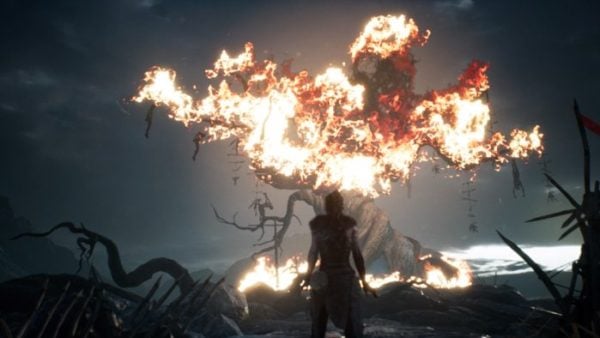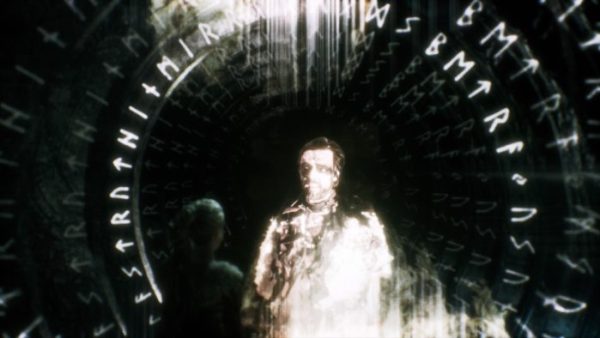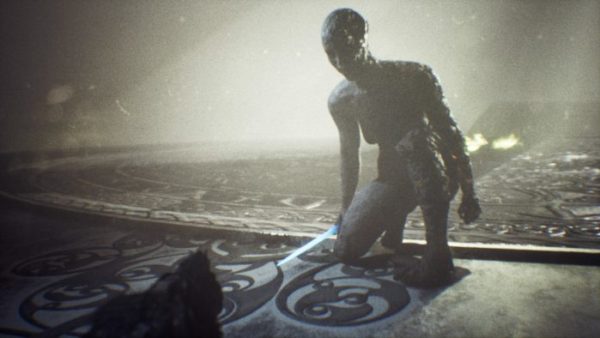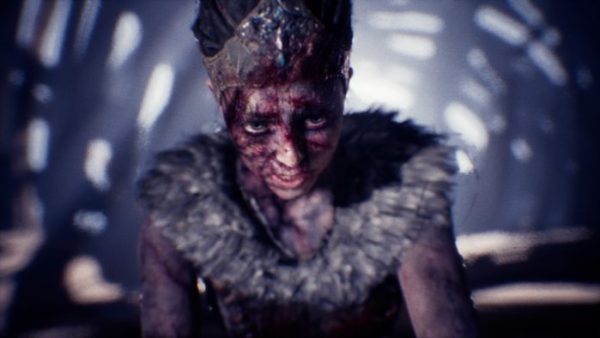Hellblade: Ending Explained, What Happened
There’s a lot going on in Hellblade: Senua’s Sacrifice, and unless you take the time to really sit down and understand Senua and the suffering she endures, a lot of it may come across as confusing. If you’ve yet to play the game, Ninja Theory’s latest title places players into the shoes of Senua, a young woman who is plagued by severe psychosis and is dealing with the loss of her beloved. What follows is a journey into hell in order to save his soul after his death, but not all is as it seems.
Since she suffers from hallucinations, it’s difficult to trust what you see. The whole story twists and turns as you move forward, taking down demons, overcoming obstacles, and finally coming face to face with what lies in the center of it all. The end tells a lot about Senua, so it’s important to sit back and really take it in. For those who maybe sped through and didn’t take in everything that happened before the credits rolled, we’re going to quickly break down Hellblade’s ending for you.
We must note that after this point there are major story spoilers, we will not be going the vague route for this explanation. If you’d rather see the ending on your own first and see what you make of it, go play then return later if you’d like. If you just really want to see what happened and don’t care about spoilers, continue on.
SPOILERS AHEAD! FINAL WARNING!
Secret Ending Scene
Hellblade: Ending Explained, What Happened
Before we get to the very ending of Hellblade, there’s a scene that is part of the ending sequence of the game that doesn’t show up for all players. The only way to get this scene to pop is to collect all 44 Lorestones scattered throughout the game’s numerous areas.
The scene, which takes place shortly before Senua finally confronts Hela in the deepest recesses of Helheim, shows Druth speaking to Senua one last time. Throughout the story, he provided various stories and legends based on Norse mythology, all of which helped to frame the world that players explore in the game. Senua’s father is a very religious man who kept her locked in a room full of runes so it makes sense that during her tribulation, her psychosis would use those same runes and stories to guide her along. Throughout Hellblade, he’s an honorable man, one who is full of knowledge and wisdom as he joins Senua. Yet, that changes after collecting all the stories.
Before the final fight, Druth appears one last time as long as all the runes are lit up (meaning you’ve collected them all). He’ll share how he is not the man you think he is, but rather a coward who couldn’t even protect his own people. In fact, it was he who lead the invaders of his home directly to the treasures and villages so that they may pillage and do as they please. He had tried to barter peace, but his intelligence and good will were met with violence and he was enslaved. To save himself he betrayed those closest to him, but he still suffered a horrible fate. Yet, he wasn’t only intent on sharing the truth of himself, he had a lesson for Senua.
He witnessed another man do just as he did, one that did not suffer the same consequences as Druth. This man willingly sold his own people to save himself and his village. The man is described as wearing all black and he came from Senua’s village. Druth uses this as an opportunity to tell Senua that it is not the gods who cause suffering, but those closest to us. That message opens up Senua’s eyes as she proceeds to the end.
The Truth About Her Father and the Fight With Hela
Hellblade: Ending Explained, What Happened
After hearing the truth about Druth, Senua starts to remember something she buried in her mind long ago, the death of her mother. Throughout the game, it’s said that Senua’s mother killed herself in order to spare those around her from her darkness. Like Senua, she suffered from psychosis, and many saw it as a curse that brought about bad tidings. Deaths, storms, bad luck, and more were believed to be caused by her. Yet, she didn’t kill herself, though she did try very hard to not have people suffer. Instead, it was Senua’s father who led the village as they burned her alive as if she were a witch. It was what the gods demanded.
This memory of her mother’s death brings other thoughts rushing back as well. How her father abused her mother, kept Senua locked up and terrified, convinced her that she was cursed and that all bad things happened because of her. How it was all due to the gods and he was just trying to protect her. A rage builds up inside her and she believes that Hela is actually her father and she goes to face her. She starts to go through all the stages of grief as she moves to confront the last demon holding her love hostage.
During the fight with Hela, Senua is confronted by all of her demons once again. Valravn, Surtr, and Fenrir wield their ugly heads as more enemies continue to assault her, but by sheer force of will she breaks through only to see that she cannot harm Hela. Voices are constantly screaming in her head, telling her to give up, that she must give in in order to see this through. Endless enemies swarm Senua until she finally breaks and allows her self to fall to their blades.
Her anger is at its highest as Hela sits over her, just staring blankly, but that eventually descends into her pleading for Dillion, her lost love, and willing to give up herself. In the end, she chooses to just accept her fate as Hela drives her sword into Senua’s chest. Senua is dead, after vowing to not let her father take her life or have any further control over her it is done. We next see Hela, holding Dillion’s skull that Senua carried throughout the entire game, staring into its empty sockets. It’s not until Senua dies, though, that Hellblade’s story all comes together.
The Ending
Hellblade: Ending Explained, What Happened
As Hela sits there with the skull, she’s no longer in Helheim. And it appears as if she is crying — not something you’d expect since at one point Senua was convinced that Hela was her father in some form. At least it seemed that way. As the final cutscene continues, Hela walks to the edge of the platform she’s on and lets the skull fall to never be seen again. As the camera pans away from the skull and back to Hela, we see Senua sitting there, beaten down, but far from defeated.
It turns out that Hela was Senua deep down inside and that makes a lot of sense. Hela rules Hel in Norse mythology, and that’s the world that Senua’s psychosis created so it only makes sense that she would be its ruler, knowingly or not. While it was the loss of Dillion and her father’s abuse that drove Senua to this state in Hellblade, it was ultimately her who created this hell for herself. Her grief and the fact that she blamed herself for everything that transpired in her life caused her to turn inward and lock herself down. The voices she hears, a maddening part of her psychosis, pull her thoughts back and forth leaving her confused which made matters even worse.
But, thanks to Dillion’s lessons from when he was alive, and that you hear repeated through Hellblade’s story, Senua slowly came to realize that she had to triumph over herself, that only she could escape the dark twisted world of her mind. During the fight with Hela and the discarding of the skull, Senua finds acceptance. Yes Dillion is gone, and yes her father is a large source of her pain, but she realizes that she must be strong and move on. She relied heavily on Dillion before he passed, but that’s no way to live. One must be strong alone as well and Hellblade’s story taught her that even though it was a nightmare to get through.
While the voices in her mind left before the fight with Hela, they have returned at the end. Psychosis isn’t something so trivial that it can be miraculously cured, that’s just unrealistic. However, it shows that Senua has found new strength that she will use going forward. Before it ends, Senua asks us, the players, to follow her on her new adventure. One that we pray is free from the demons she fought so valiantly to overcome.



